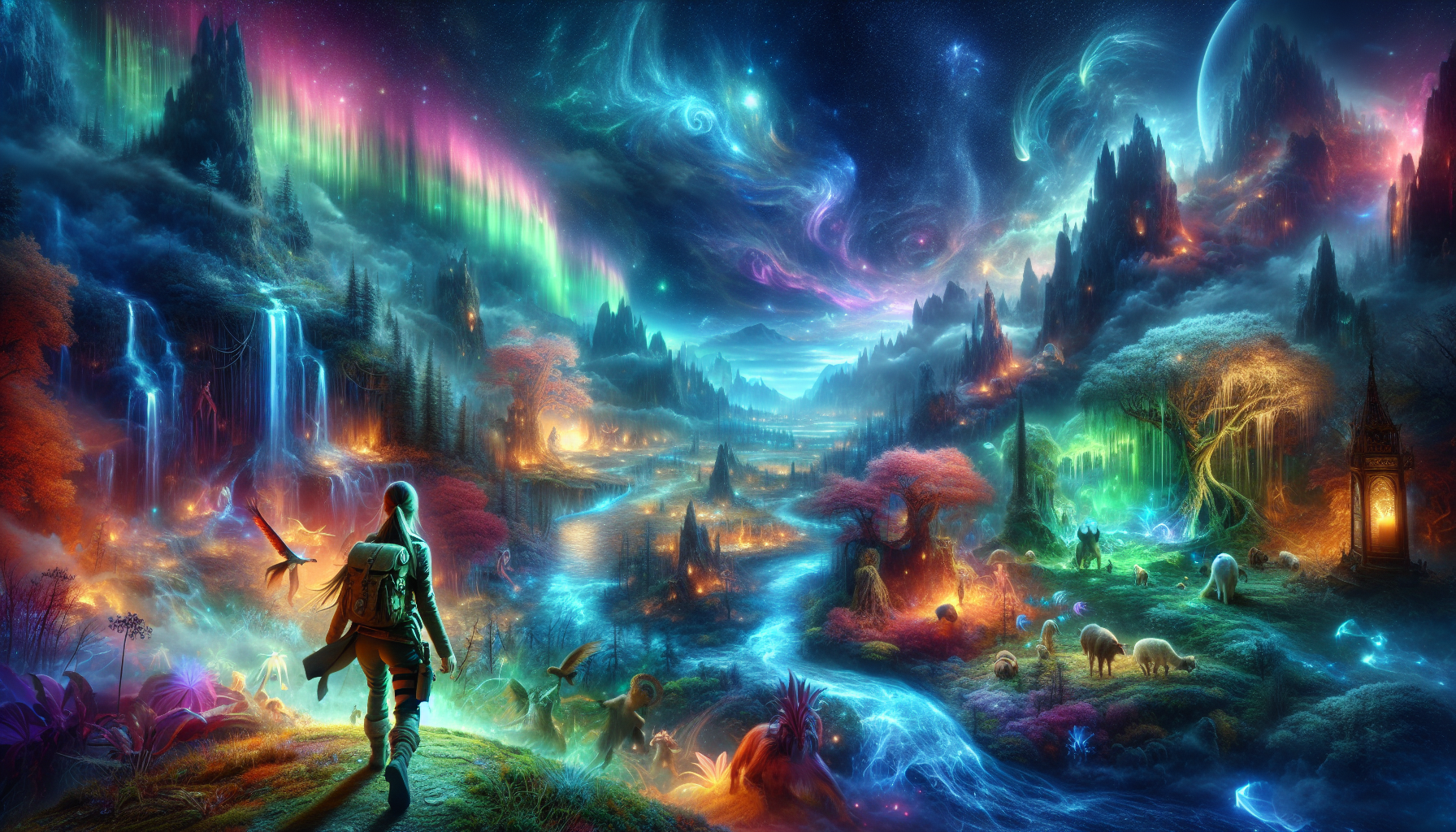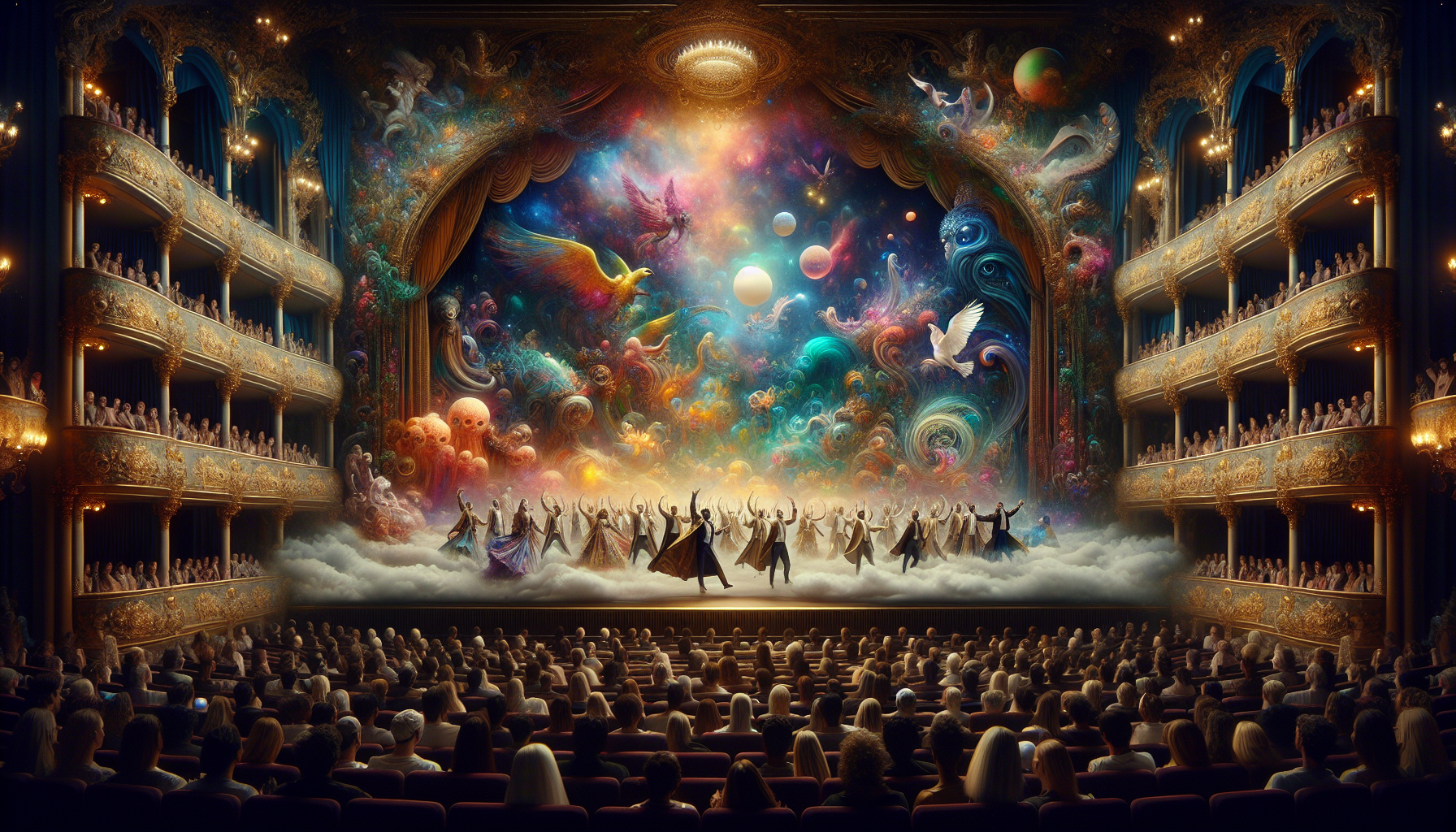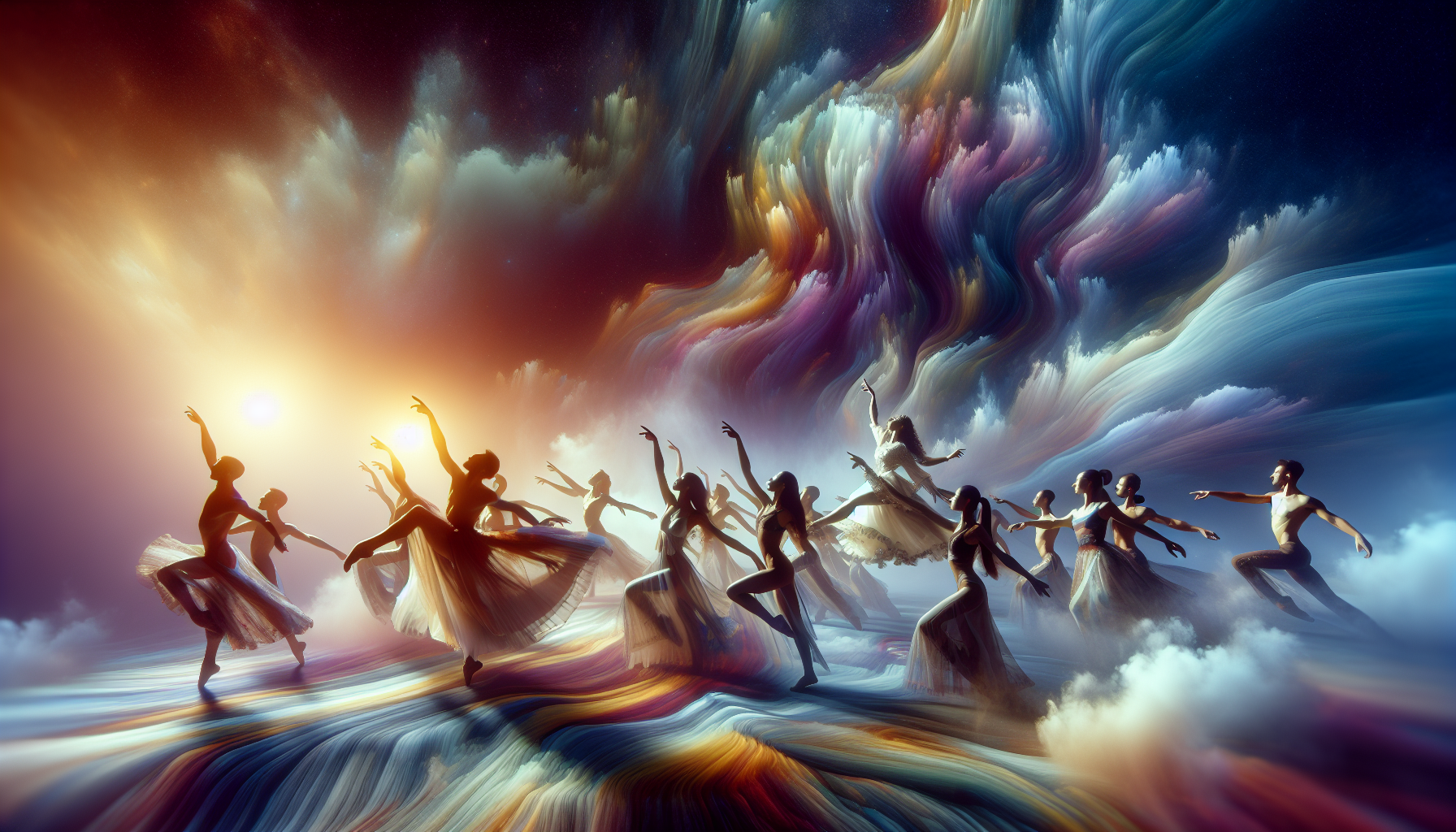Dreams have fascinated humanity for centuries, transcending the boundaries of time, geography, and culture. They are the silent narrators of our subconscious, weaving stories and scenarios that, at first glance, might seem bewildering or cryptic. Yet, these nocturnal adventures are far from random. Instead, they are deeply intertwined with our cultural backgrounds, personal experiences, and societal norms. 🌍✨ In this exploration of the dream world, we will unravel the complex tapestry of how culture shapes the meaning behind our dreams, offering insights into the universal language of the subconscious mind.
Imagine waking up from a dream filled with vivid imagery of an ancient festival, intricate symbols, or mythical creatures. You might wonder why your mind conjured such specific scenes. The answer often lies in the rich tapestry of cultural influences that have seeped into your subconscious over time. Culture acts as a lens through which we interpret the world around us, and it is no different when it comes to dreams. The symbols, scenarios, and emotions we experience while dreaming are often reflections of the cultural narratives that we have absorbed throughout our lives. From the Aboriginal dreamtime stories in Australia to the intricate symbolism of dreams in Ancient Egypt, culture profoundly shapes how we perceive and interpret our dreams.
As we delve deeper into this fascinating subject, we will explore a variety of cultural perspectives on dreams, highlighting both the differences and similarities that exist around the globe. We will journey through the dream landscapes of diverse societies, examining how various cultures understand and value dreams. Whether it’s the spiritual messages believed to be conveyed through dreams in Native American cultures, or the psychological insights sought in Western dream analysis, each cultural framework offers unique interpretations and understandings. By examining these perspectives, we will gain a deeper appreciation of the universal yet culturally distinct nature of dreaming.
Furthermore, this article will shed light on how dreams can influence cultural identities and vice versa. We will investigate the dynamic relationship between dreams and cultural beliefs, traditions, and practices. How do societal changes and cultural evolution impact the way we dream and interpret those dreams? How do cultural symbols and myths find their way into our dreams, shaping our perceptions and emotions? By answering these questions, we will uncover the profound impact that culture has on the content and significance of our dreams, ultimately shaping how we perceive ourselves and the world around us.
Finally, we will offer practical insights and techniques for individuals seeking to understand their own dreams within their cultural context. Whether you’re curious about the significance of recurring symbols or eager to explore the deeper meanings behind your nightly adventures, understanding the cultural dimensions of your dreams can be a powerful tool for personal growth and self-awareness. By the end of this article, you will be equipped with a richer understanding of the intricate dance between culture and dreaming, unlocking the potential to better interpret the messages of your subconscious mind.
Join us on this journey through the dreamscapes of different cultures, where we will unlock the mysteries behind the dreams that captivate us, frighten us, and inspire us. Dreams are not just fleeting moments of the night; they are windows into the soul, offering profound insights into our deepest desires, fears, and aspirations. Through the lens of culture, we will explore the universal language of dreams, uncovering the rich and diverse meanings that lie within. Let the adventure begin. 🌙🔍
The Intricacies of Dream Interpretation Across Cultures
Dreams have intrigued humanity since time immemorial. They serve as windows into our subconscious and often reveal much about our innermost thoughts and desires. However, the interpretation of these nocturnal narratives is not a one-size-fits-all approach. Different cultures attribute varying meanings to similar dream symbols, showcasing a tapestry of interpretations shaped by societal values, traditions, and histories.
In Western cultures, for instance, dreams are often seen through a psychological lens. Influenced heavily by the works of Sigmund Freud and Carl Jung, Western dream interpretation frequently involves exploring repressed desires or tapping into archetypes. Freud, for instance, proposed that dreams were a manifestation of our deepest, often socially unacceptable desires, while Jung suggested that they were a means of connecting with our collective unconscious. This contrasts with Eastern philosophies, where dreams might be seen as connections to spiritual realms or messages from ancestors, reflecting a more holistic view of the human psyche.
Meanwhile, indigenous cultures might interpret dreams as vital components of community health and spirituality. For example, among the Aboriginal Australians, dreams are an essential part of the “Dreamtime,” an ancient time when ancestral spirits shaped the world. Such dreams are not just personal experiences but are considered a way to communicate with the spiritual world, receiving guidance and wisdom that affect not just the individual but the community as a whole.
Comparative Dream Symbols: East vs. West
Let’s explore some common dream symbols and how their interpretations might vary between Eastern and Western cultures. Understanding these differences can deepen our appreciation of the rich tapestry of human experience and highlight the role culture plays in shaping our dream world.
| Symbol | Western Interpretation | Eastern Interpretation |
|---|---|---|
| Water | Represents emotions and the unconscious mind. Calm waters suggest peace, while turbulent waters indicate turmoil. | Symbolizes purification, transformation, and often relates to spiritual journeys or changes. |
| Snake | Can symbolize danger or hidden fears. Sometimes associated with healing and transformation, drawing on Jungian archetypes. | Often seen as a sacred symbol, representing fertility, creativity, and wisdom. |
| Flying | Commonly associated with a desire for freedom or a need to rise above challenges. | May symbolize transcendence or liberation from earthly concerns, often seen in a spiritual context. |
For a deeper dive into the cultural nuances of dream interpretation, watch this insightful video: “Understanding Dreams: A Cultural Perspective” – YouTube Channel Name. This video explores how different societies approach dream analysis, offering a fascinating look at the diversity of thought surrounding this universal human experience.
The Role of Dreams in Traditional Societies
In many traditional societies, dreams are more than mere reflections of the subconscious; they are vital tools for guidance, healing, and decision-making. Shamans and spiritual leaders often interpret dreams to diagnose illnesses, predict future events, or communicate with the divine. This practice highlights a profound belief in the interconnectedness of the spiritual and physical worlds.
For the Native American tribes, dreams are sacred and often seen as messages from the Great Spirit. They believe that during sleep, the soul can leave the body and communicate with other realms. Dreams are used as a form of spiritual guidance, providing insights into life paths and personal growth. Similarly, in African cultures, dreams are closely linked to ancestral spirits. They are seen as a medium through which ancestors communicate with the living, offering advice, warnings, or blessings.
In these contexts, dreams are not just personal experiences but are shared with the community. This communal aspect highlights the importance of dreams in maintaining social harmony and spiritual well-being. By sharing and interpreting dreams, communities can address collective concerns, reinforcing cultural values and strengthening social bonds.
Communal Interpretation and Its Impact
The communal interpretation of dreams is a practice that fosters unity and collective understanding. In societies where this is prevalent, the interpretation is not left to the individual alone but involves elders or spiritual leaders who guide the process. This communal approach ensures that dream interpretation is rooted in the cultural and spiritual beliefs of the community, providing a framework that enriches individual and collective well-being.
- Dreams are shared openly, encouraging transparency and trust within the community.
- Community leaders provide interpretations, grounding dreams in cultural wisdom and tradition.
- Collective interpretation strengthens social ties, reinforcing a sense of belonging and mutual support.
Engage with this captivating video that explores the communal aspects of dream interpretation in traditional societies: “Dreams in Indigenous Cultures” – YouTube Channel Name. This video delves into how communities use dreams to navigate social dynamics and foster collective growth.
The Psychological Perspective: Beyond Freud and Jung
In modern psychology, dreams continue to be a subject of intense study and debate. While Freud and Jung laid the groundwork for understanding the psychological significance of dreams, contemporary theories have expanded on these ideas, offering new insights into the role of dreams in mental health and cognitive processes.
Today, neuroscientists and psychologists explore dreams through the lens of brain activity and cognitive function. Theories such as the activation-synthesis model suggest that dreams result from the brain’s attempt to make sense of random neural activity during REM sleep. This approach shifts the focus from symbolic interpretation to understanding the physiological processes underpinning dream formation.
Other contemporary theories propose that dreams play a role in problem-solving and memory consolidation. During sleep, the brain processes information gathered throughout the day, and dreams may help in reorganizing and integrating this information, aiding learning and adaptation. This perspective aligns with cognitive psychology, which views dreams as an extension of waking thought processes.
Modern Dream Analysis Techniques
Modern dream analysis often involves a combination of psychological and neuroscientific approaches. While symbolic interpretation remains popular, there is a growing emphasis on empirical methods that examine the relationship between dreams and cognitive functions.
- Content analysis involves systematically examining dream reports to identify patterns and themes.
- Dream journals are used to track and analyze dreams over time, revealing changes in thought patterns and emotional states.
- Neuroimaging techniques, such as fMRI, provide insights into brain activity during dreaming, enhancing our understanding of the neural mechanisms involved.
For a contemporary take on dream analysis in psychology, watch this informative video: “The Science of Dreaming” – YouTube Channel Name. It provides an overview of how modern science approaches the enigmatic world of dreams, blending traditional psychological theories with cutting-edge research.
Dreams remain a fascinating and complex aspect of human experience. As we continue to explore the depths of our dream worlds, the interplay of culture, psychology, and spirituality offers rich insights into the essence of what it means to dream. Whether seen as messages from the divine, reflections of the subconscious, or random neural firings, dreams hold a mirror to our deepest selves and our shared humanity.

Conclusion
Concluding an exploration into how culture shapes the meaning behind our dreams requires us to reflect on the intricate tapestry of human thought and experience. Throughout this article, we have delved into the multifaceted role that cultural context plays in interpreting dreams, unveiling how our backgrounds influence not only the content of our dreams but also how we perceive and understand them.
Initially, we explored the universal nature of dreaming and how, despite the commonality of this human experience, interpretations can vary dramatically across different cultures. We examined the way dreams are perceived in various societies, from the spiritual significance attributed to them in Indigenous cultures to the psychoanalytic approaches popularized in the West by figures such as Freud and Jung. These foundational insights underscore the notion that dreams are not mere random firings of the brain, but rather a complex dialogue between our subconscious minds and our lived realities.
Moving further, we discussed specific cultural examples, like the vivid dream interpretations in Chinese culture, where dreams are seen as harbingers of good or bad fortune, and the Islamic perspective, where dreams can serve as a form of divine communication. Such examples illustrate how deeply entrenched beliefs and traditions influence the meanings assigned to dreams and how these interpretations can affect decision-making and behavior in waking life.
Moreover, we tackled the impact of modern globalization on dream interpretation. In our increasingly interconnected world, cultural exchanges have led to a fusion of dream symbols and meanings, offering a richer, albeit more complex, tapestry of interpretation. This global perspective opens up new avenues for understanding dreams, encouraging a cross-cultural appreciation that can lead to personal and collective growth.
In reflecting on these points, it becomes evident that understanding dreams requires more than just personal introspection; it demands a recognition of the cultural lenses through which we view the world. By appreciating the diverse ways in which dreams are understood, we not only gain insight into our own subconscious but also foster empathy and understanding across different cultures.
The importance of this topic lies in its potential to unite us in our shared human experience while celebrating our differences. Dreams, as a universal yet deeply personal experience, offer a unique opportunity to bridge cultural divides and deepen our understanding of one another. Whether through the recognition of common symbols or the appreciation of unique interpretations, exploring dreams can enhance our empathy and compassion for others.
As you ponder the insights shared in this article, I encourage you to reflect on your own dreams and consider the cultural influences that may shape their meanings. Engage in conversations with people from different backgrounds to explore how their cultural contexts influence their dream interpretations. By doing so, you can deepen your understanding of both yourself and the world around you.
Feel free to share this article with others who might be interested in the fascinating interplay between culture and dreams. By spreading this knowledge, you contribute to a broader conversation about the significance of dreams and the ways they can enrich our lives. 🌍
If this article has inspired you to learn more, I recommend exploring further readings from reputable sources on dream psychology and cultural studies. Websites such as the American Psychological Association (https://www.apa.org) and resources on cultural anthropology offer a wealth of information to expand your understanding.
In closing, may your dreams be a source of inspiration and reflection, guiding you on a journey of self-discovery and cultural appreciation. By unlocking the meaning behind your dreams, you embark on a path towards greater awareness and empathy, enriching not only your own life but also the lives of those around you. Happy dreaming! ✨
Gabriel is a visual storyteller and dream archivist whose work explores the fragile boundary between memory and imagination. Through layered visuals and symbolic design, Gabriel captures the fleeting essence of dreams — those strange, beautiful, and sometimes haunting fragments that drift through sleep and linger in waking thought.
His creative journey is rooted in a deep fascination with the subconscious and the imagery it conjures. From half-remembered landscapes to recurring symbols and surreal encounters, each piece Gabriel brings to life becomes a portal into the inner archive — where time distorts, meanings shift, and personal mythology takes form.
With a background in handcrafted artistry and visual composition, Gabriel merges intuition with intention. His work doesn’t merely depict dreams; it preserves them, translating ephemeral moments into tangible expressions that evoke emotion, curiosity, and quiet revelation. Each visual is both a record and an invitation to explore the rich terrain of inner life.
Through illustrated dream journals, symbolic studies, and visual essays, Gabriel invites others to connect with the poetic architecture of their subconscious landscapes. His art becomes a mirror — not only of what we see at night, but of what we carry deep within.
His work is a tribute to:
-
The fragile beauty of forgotten dreams
-
The language of symbols in the subconscious mind
-
The inner worlds we visit but rarely name
Whether you’re a lucid dreamer, a seeker of hidden meanings, or someone fascinated by the mystery of sleep-born stories, Gabriel welcomes you to step into a space where dreams are not lost — they are archived, one vision, one sketch, one silent narrative at a time.





